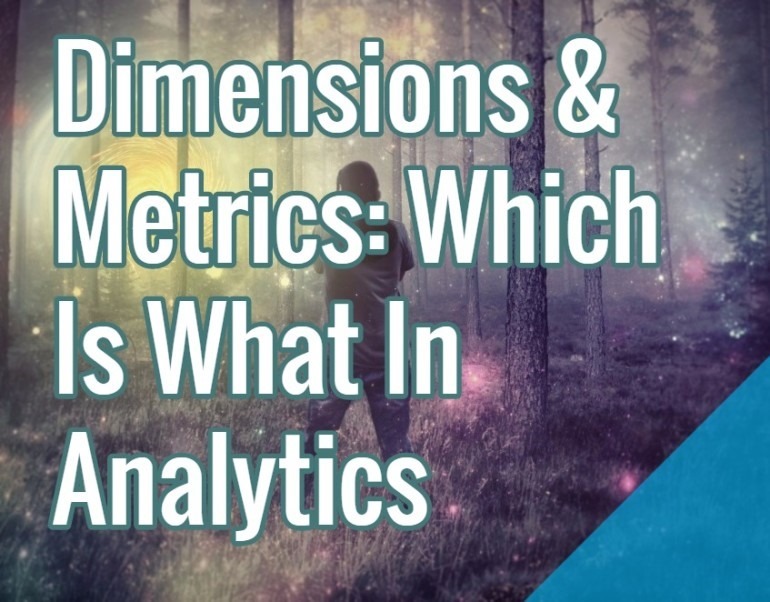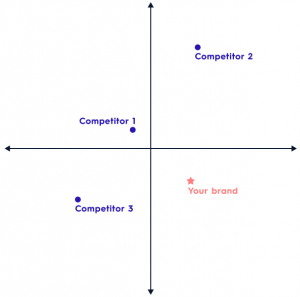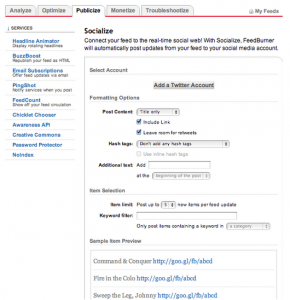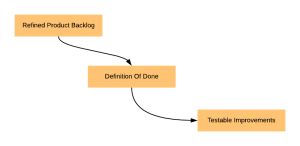
Let’s get straight to the point and make it simple.
- Metric is a number. It is a Count (a total or a sum), an average, or a Ratio (one number divided by another number). Metrics are measurable.
- Dimension is an attribute of a visitor to your website – where they came from, their location, how many pages they viewed, etc. They are characteristics of the website users, their actions and sessions.
If you are looking at your Analytics reports, dimensions are located in rows and metrics – in columns. (Source: Web Analytics 101: Definitions: Goals, Metrics, KPIs, Dimensions, Targets).
Now, let’s make everything a little more complicated.
Metrics
Metrics help understand behavior of your visitors.
Metrics help
understand
behavior of
your visitorsThey measure how often an action is taken, a behavior occurred. For example, how many people use your app in a month, on average. Or, how many website visitors you had in a week. Metrics can also track desired actions, like newsletter subscriptions, and give you a subscription growth ratio month over month.
One of the most common metrics to track is the number of unique visitors or users who came to your website during a specified period of time. By analyzing this metric, you will be able to better understand your website audience. For example, you can separate the visitors into new and returning to find out the differences in interest and intent of these distinctive groups.
Dimensions
Dimensions are characteristics of website users and their activity on the website.
They contain information about the visitors – where they are coming from, when, what device they are using, which screen resolution, what pages they visited, how long they stayed, if they are new or returning visitor, number of days since their last visit, etc.

Even though some of these characteristics are numbers and resemble metrics, they are dimensions, because they describe the user and the user’s behavior.
Using Dimensions And Metrics
When creating custom reports, it is important to remember that not every metric can be combined with every dimension. Only when dimension scope matches metric scope will the data make sense.
Sessions & Hits
In addition to user-level scope, metrics and dimensions have session-level and hit-level scope.
User-level scope, like geographical location, is quite straightforward.
Sessions and hits need some additional explanation.
A hit in Google Analytics is a page view (including virtual page view), an event, a social action, or an ecommerce transaction. Page views are generated by default; all other types of interactions require manual setup in Google Analytics. All user activity is recorded as hits. A group of hits recorded during a timeframe of a visit is defined as a session. A session is terminated when a user leaves or stops interacting with the website for 30 minutes (default in Google Analytics and can be changed in Google Analytics configuration settings).

Every action a user takes on your website is tracked by Google Analytics and recorded; each interaction as page views. Events, like watching a video, are also tracked and recorded along with the information about the experience. For example, if the user watched the whole video or just a portion of it. Setting up events require some customization to your implementation.
Many metrics in Google Analytics are time-based. In order to track them properly, Analytics tools record each interaction as a hit with a time stamp. For example, every page throughout a visitor’s journey is logged with a time stamp when it was displayed to the user. To calculate how long a user stayed on a page, Google Analytics subtracts the time the page was displayed from the time the next page was shown. Similarly, time on site is calculated by subtracting the time of the first interaction on the website from the timestamp of the last page the visitor saw.
Bounce Rate
What if a user came to the site, saw one page and left? Only one interaction happened. Google Analytics does not have a time reference from the second page to calculate the time on page and time on site metrics. Both metrics receive the value of zero. A session with only one interaction is called a bounce. Bounce rate is a percentage of sessions with just one interaction.

Since all of us want website visitors to never leave, high bounce rate is something to watch for. High bounce rate indicates low website performance. Or does it?
In most cases yes, high bounce rate implies that you are not setting the right expectations for the site visitors. It is also possible that the visitors are dissatisfied with the experience you are providing. If your marketing campaigns have high bounce rate, it spells trouble.
However, if you have a blog, the expectation is that visitors would read a post and leave. In this case, high bounce rate is ok. Of course, if you are a responsible blogger, you would still like your visitors to stay on the site, get absorbed by the masterfully written posts which draw the visitor deeper and deeper into the site, making them want to read more and more… All I am saying is you still might want to work on lowering your bounce rate.
Finally, sites that run on Flash and use AJAX generate significantly lower number of page views. You can upgrade the site and use HTML5 or implement event tracking to get more accurate data on visitors’ activity. Otherwise, you will enjoy inaccurate data, high bounce rate, and low visit duration times.
In A Nutshell
It is important to understand these definitions as you begin using analytics reports so you are correctly interpreting your data.
- If a user lands on a page or triggers an event, it is recorded in Analytics tool. It is an individual interaction with a website. Most likely, it is a page dimension, like page view. A session combines many hits from one visit. This compilation of hits includes entry page, time on site, exit page, number of pages viewed, etc.
- You can only use session-level metrics to measure session-level dimensions, like traffic source or new or return user.
- Similarly, you can only use hit-level metrics to measure hit-level dimensions, like page load time or page value. Only hit-level custom variables can be qualified as a hit and can be included in hit-level reports. Learn more about custom dimensions and metrics in this Google post.
One notable exception is bounce rate. It can be used in both hit-level scope to evaluate page performance and session-level scope to measure performance of a traffic source or a campaign.
Navigating through all metrics and dimensions is not that easy, but you can use Google’s Dimensions and Metrics Explorer to make the job more manageable. When you click on a plus sign and then select dimension or metric. The values that cannot be combined are grayed out.
Are you ready for some custom reports with mind-blowing insights? Good luck!
Hand-Picked Related Articles:
- Which Pages Receive The Most Internal Traffic [Google Analytics]
- How To Get Maximum Profit From Your Google Analytics + Adwords Connection
- How To Get Data For A Specific List Of URLs In Google Analytics
* Adapted lead image: Public Domain, pixabay.com via getstencil.com
Let’s get straight to the point and make it simple. Metric is a number. It is a Count (a total or a sum), an average, or a Ratio (one number divided by another number). Metrics are measurable. Dimension is an […]
Post from: Search Engine People SEO Blog
Dimensions & Metrics: Which Is What In Analytics
—
Written by Lyena Solomon, Personal Blog
The post Dimensions & Metrics: Which Is What In Analytics appeared first on Search Engine People Blog.
Search Engine People Blog(100)








